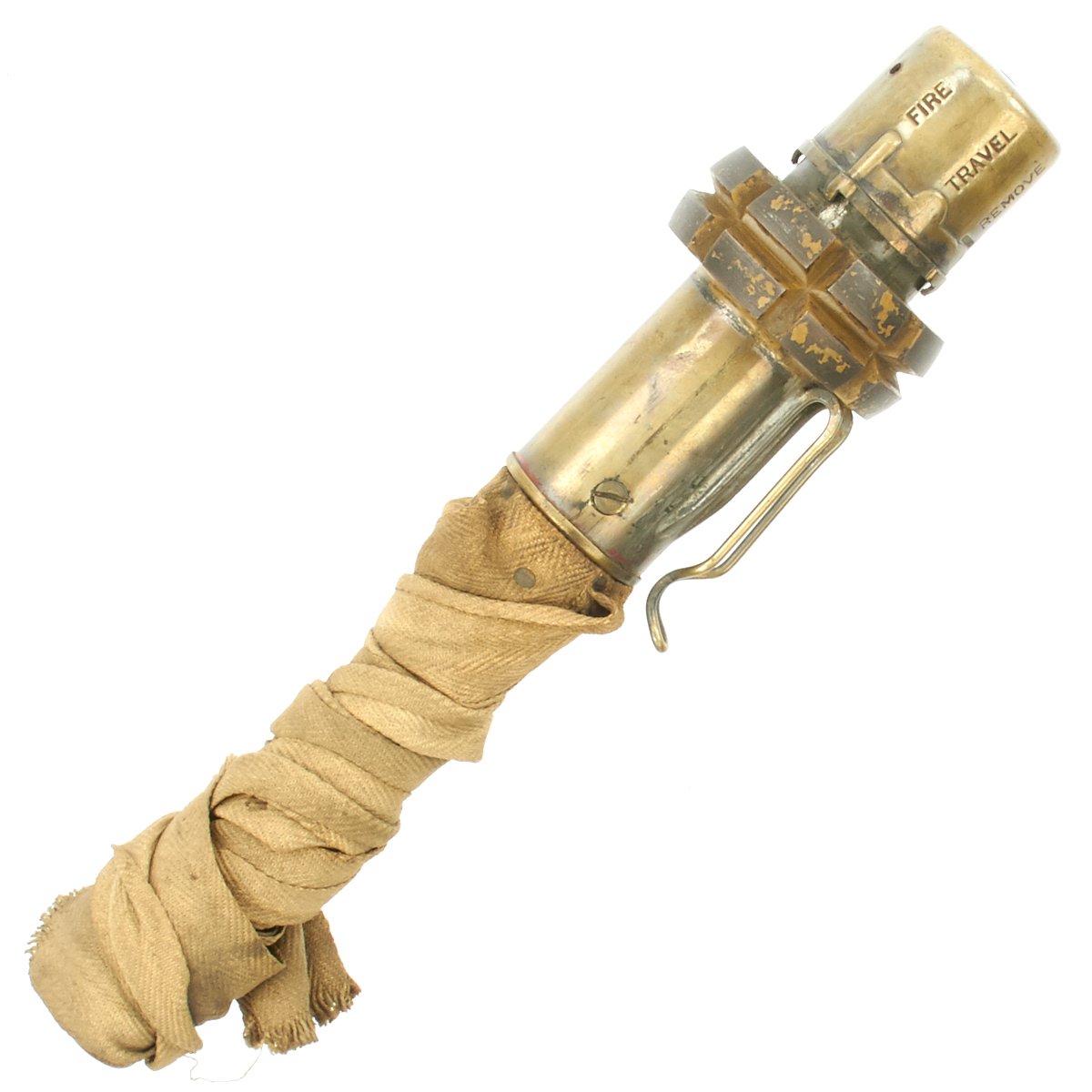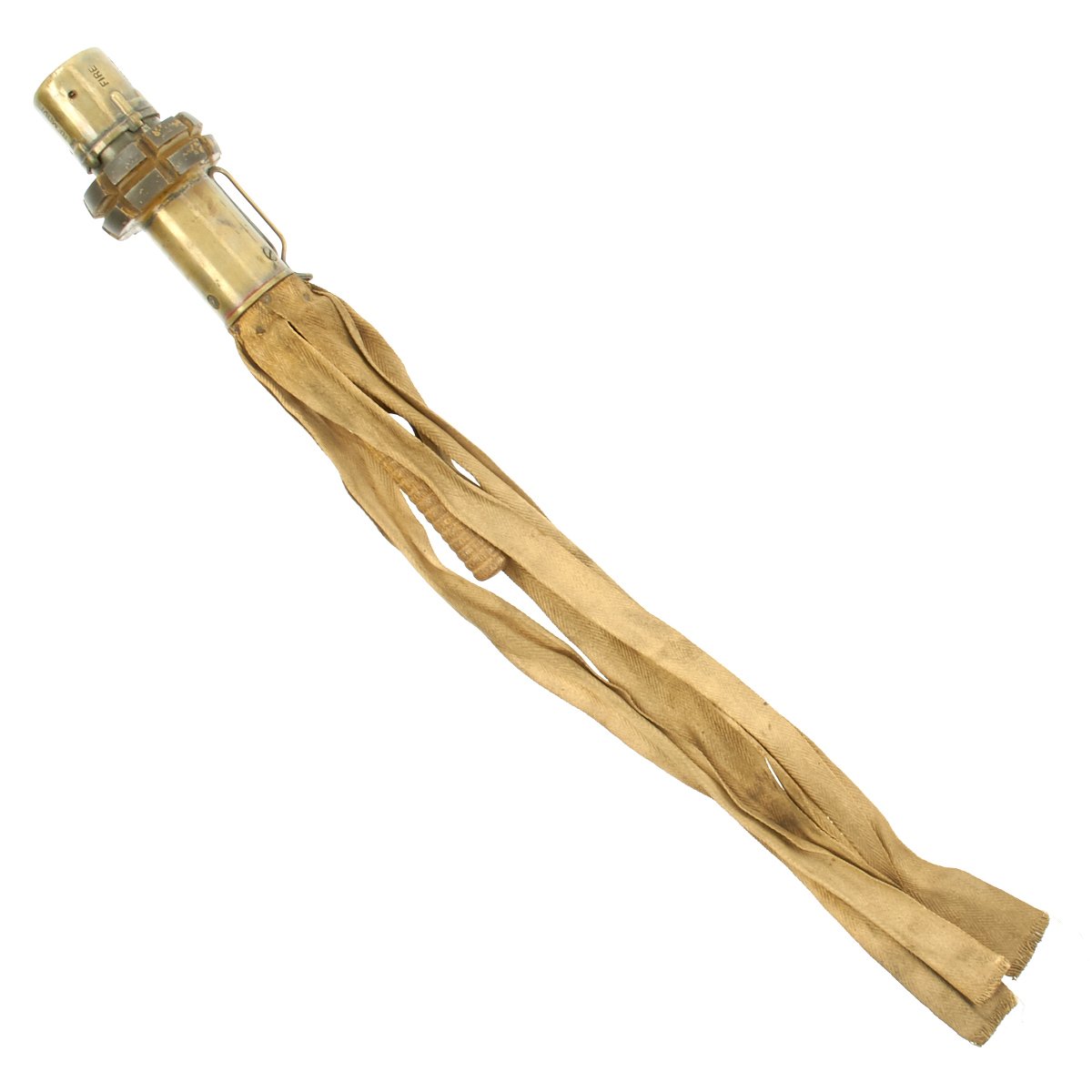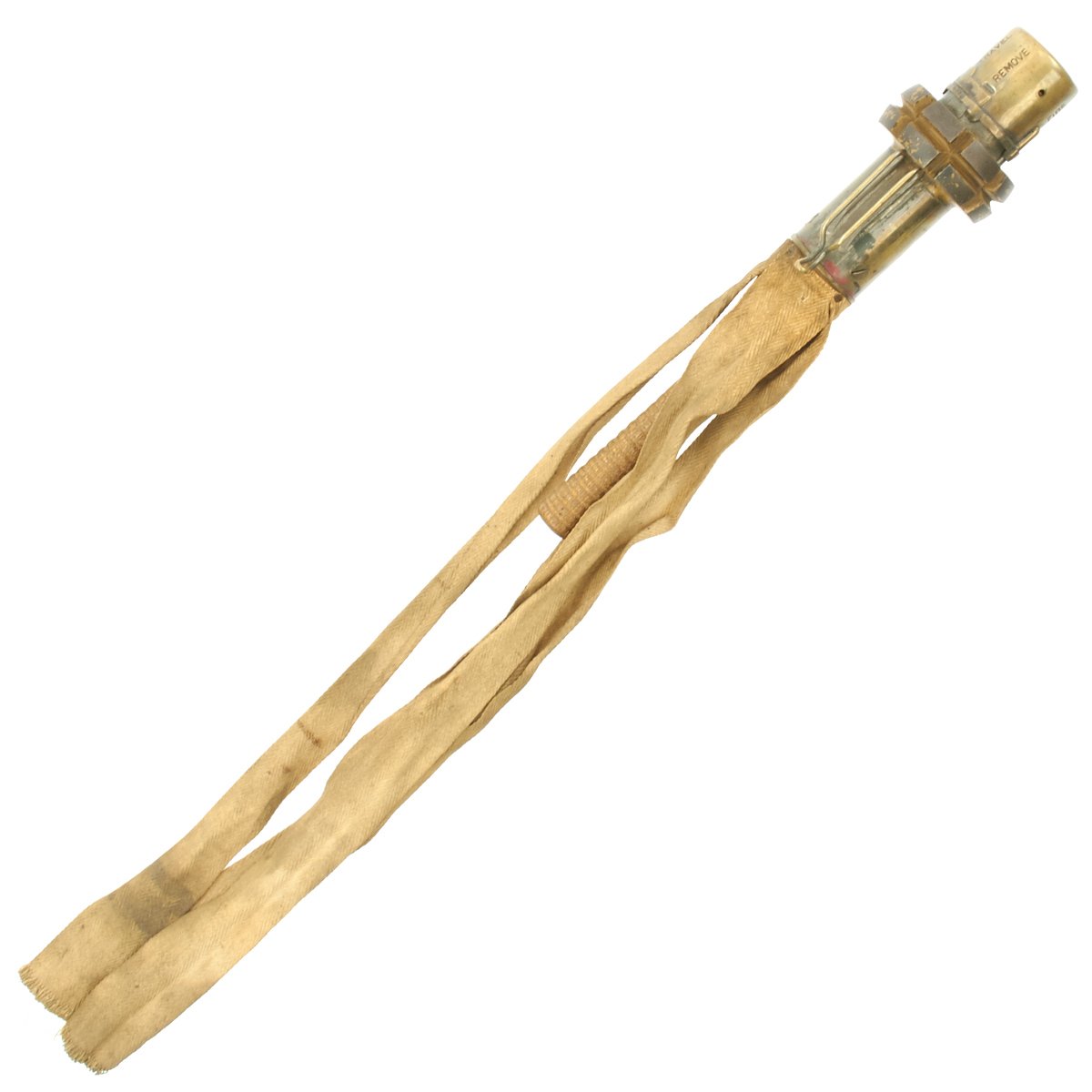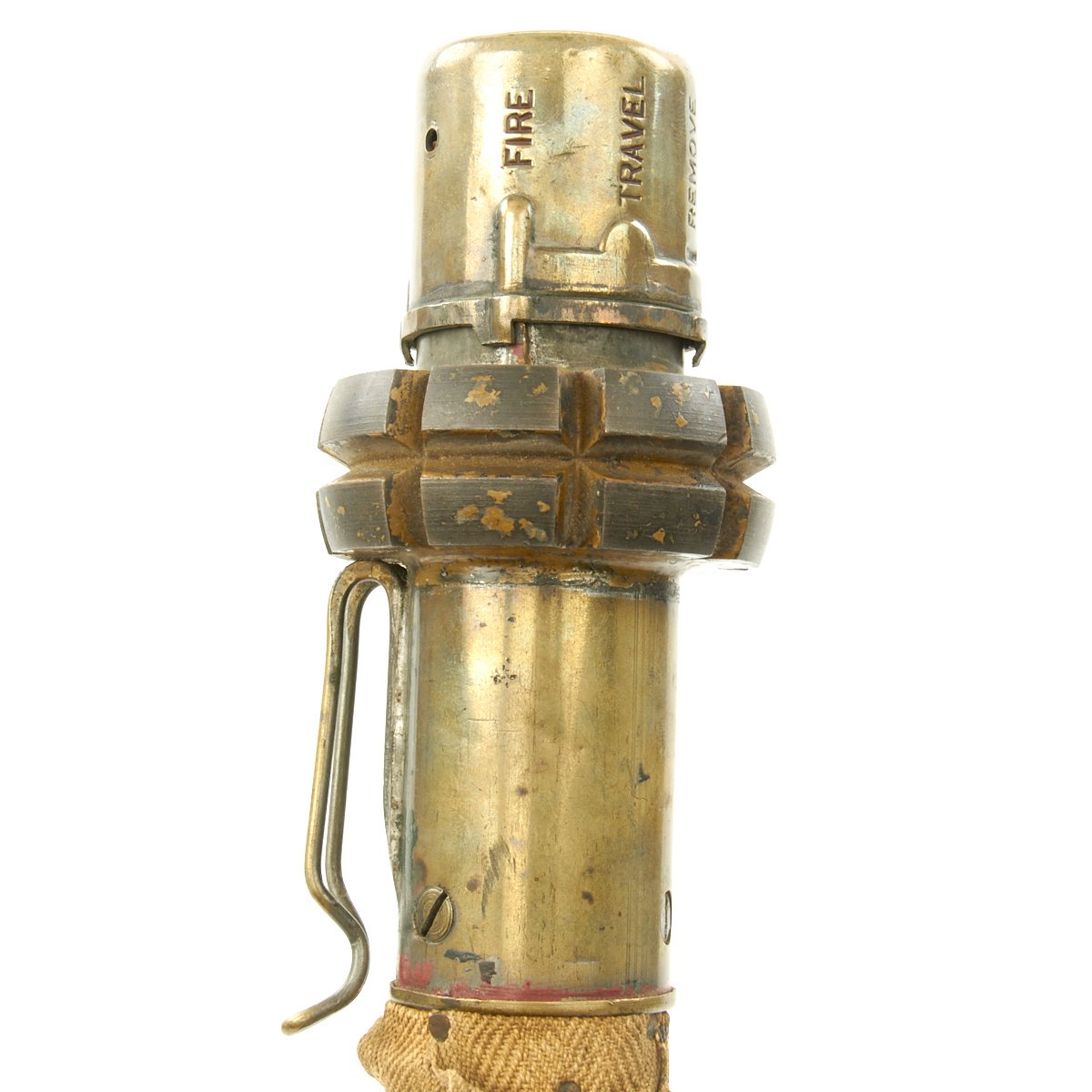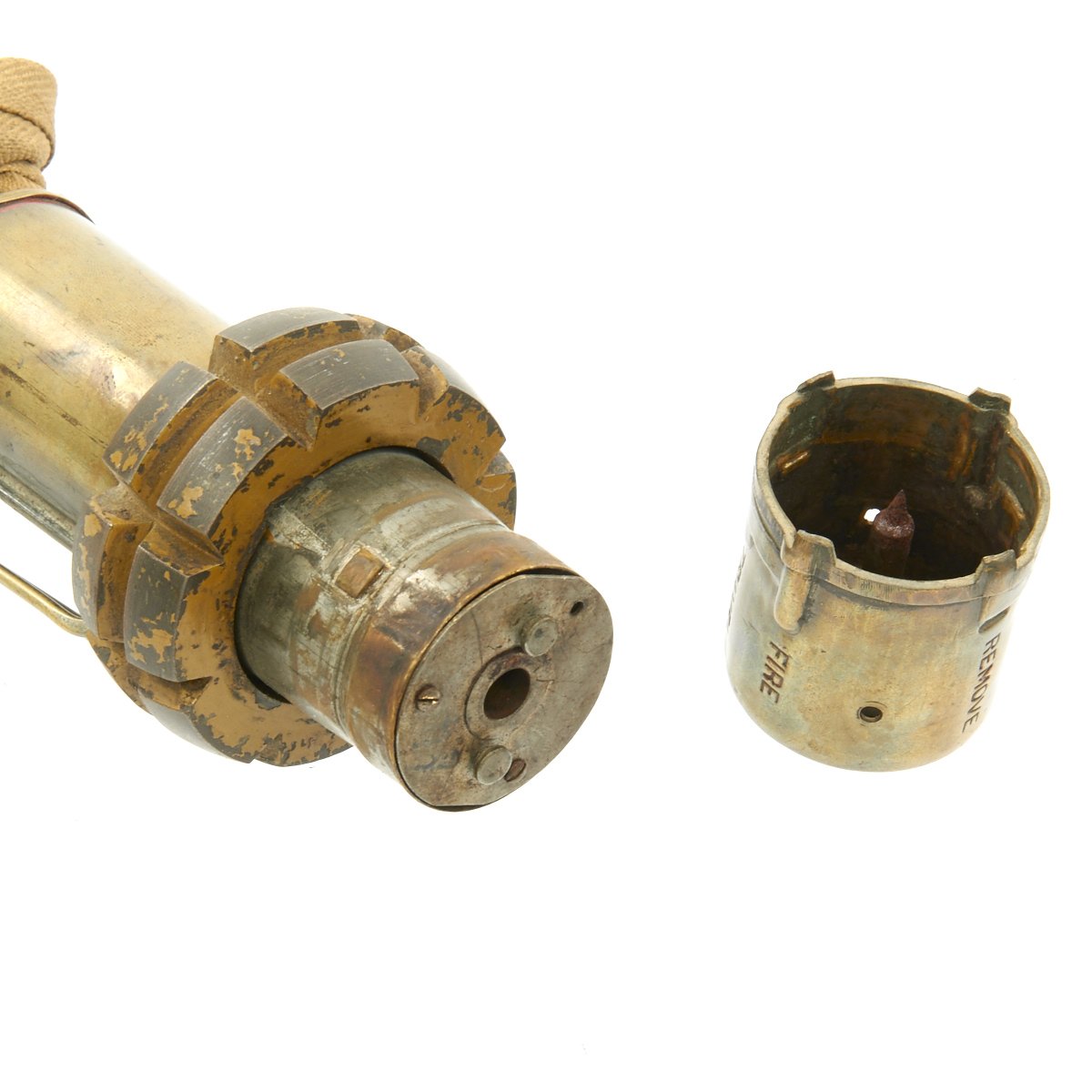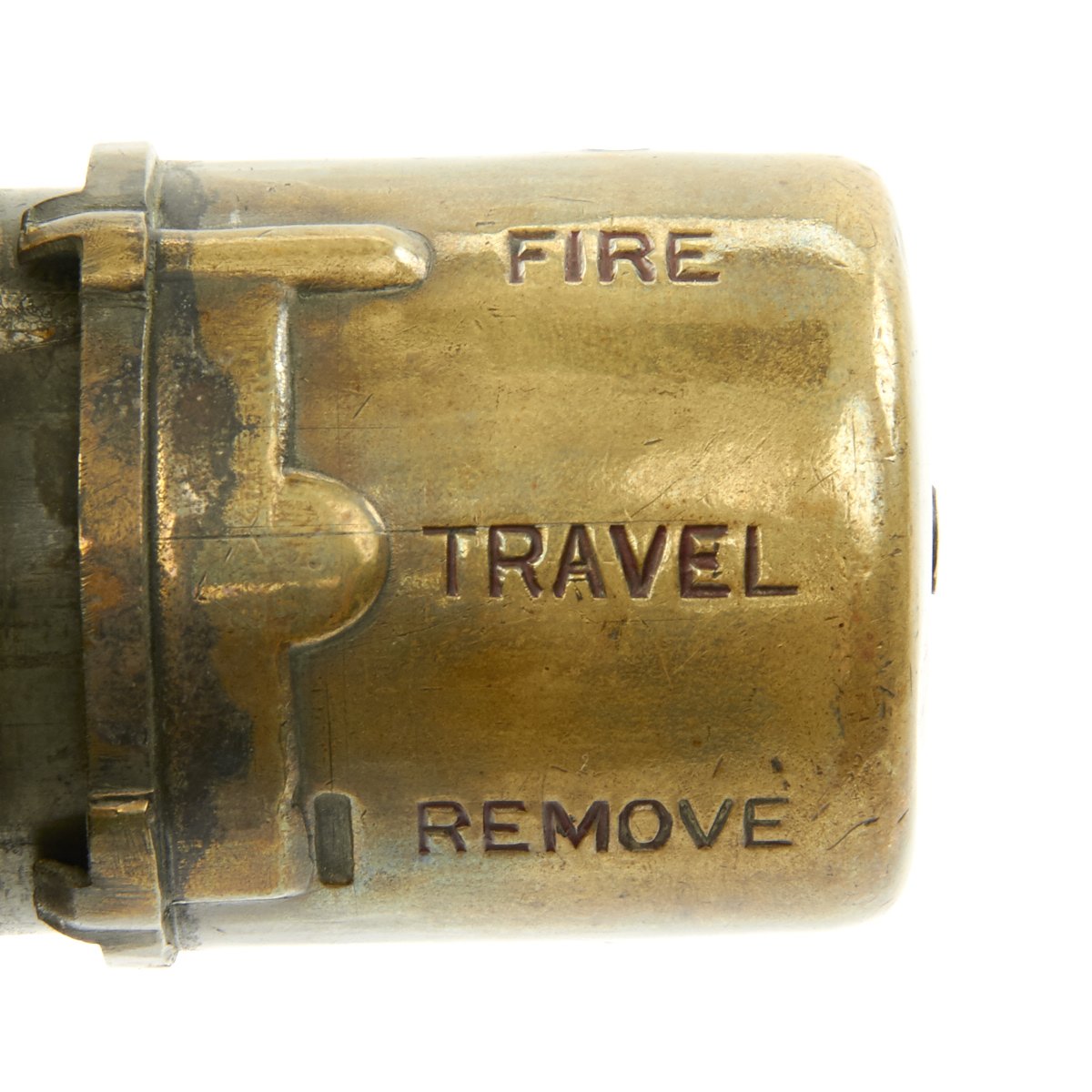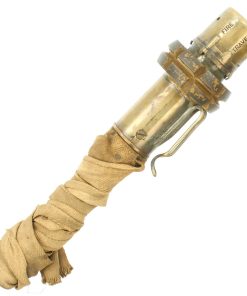Original British WWI Inert No. 1 MkII Stick Hand Fragmentation Grenade with Intact Tails – Very Rare Original Items
$ 1.495,00 $ 373,75
Original Item: Only One Available. This is an excellent original inert example of an extremely hard to find British ordnance piece from WWI! The very attractive brass body and streamers really make this a flagship piece for any ordnance collection. It was only produced in small numbers for a short time, so examples in any condition are rare.
The grenade, hand No. 1 was the first British hand grenade used in World War I. It was designed in the Royal Laboratory, based on reports and samples of Japanese hand grenades during the Russo-Japanese War provided by General Sir Aylmer Haldane, who was a British observer of that war. The grenade proper is a container of explosive material with an iron fragmentation band. The fuse was of the impact sort, detonating when the top of the grenade hit the ground. A long cane handle (approximately 16 inches or 40 cm) allowed the user to throw the grenade further than the blast of the explosion. To ensure that the grenade hit the ground nose first, a cloth streamer was attached to the end of the handle. When thrown, this unfurled and acted as a tail to stabilize flight. The grenade came with a metal loop so it could hang from a belt.
This particular grenade is the MkII version of the No.1, which features a shorter handle, based on field reports that the long handle on the original was a liability. The brass components are in lovely condition, with great patina, and the fuse easily cycles through the “FIRE”, “TRAVEL” and “REMOVE” positions. The cap also comes off easily, allowing some degree of internal inspection. The brass belt clip is still intact, and the grenade still has the original streamers attached, though they are a bit worn. There are some markings stamped into the wooden body of the handle, but we have not been able to decipher them, and are most likely assembly numbers.
Really a great example of this very attractive grenade, complete and ready to display!
The No.1 Grenade in the Field:
When the battlefield became confined to the trenches, the long handle became a liability, causing several accidents. Reaching back for the throw, the fuse could strike the trench side. The No. 3, a variant of the No. 1, had a shorter handle for easier use in trenches. Even with these adjustments, the No. 1 and its variants did poorly in battle. According to German prisoners captured at Ypres in January 1916, the No. 1 could be deflected by wooden boards. In some cases, the deflected grenade could be thrown back.
Manufacturing the No. 1 was difficult, as it required a special detonator that could only be produced by the ordnance factories. Because of this, the British Expeditionary Force got far fewer No. 1s than were ordered. A version that used a more common detonator, the No. 18, was designed, but by then battlefield experience had shown that the No. 1’s design was ineffective.
The difficulty of operating it in trenches plus the special detonator caused Britain to create several stopgap grenades, such as the jam tin grenade, until the Mills bomb was adopted.
Fast Shipping with Professional Packaging
Thanks to our longstanding association with UPS FedEx DHL, and other major international carriers, we are able to provide a range of shipping options. Our warehouse staff is expertly trained and will wrap your products according to our exact and precise specifications. Prior to shipping, your goods will be thoroughly examined and securely secured. We ship to thousands clients each day across multiple countries. This shows how we're dedicated to be the largest retailer on the internet. Warehouses and distribution centres can be located throughout Europe as well as the USA.
Note: Orders with more than one item will be assigned a processing date depending on the item.
Before shipping before shipping, we'll conduct a thorough inspection of the items you have ordered. Today, the majority of orders will be delivered within 48 hours. The delivery time will be between 3-7 days.
Returns
The stock is dynamic and we cannot completely manage it because multiple stakeholders are involved, including our factory and warehouse. So the actual stock may alter at any time. It's possible that you may not receive your order once the order has been made.
Our policy is valid for a period of 30 days. If you don't receive the product within 30 days, we are not able to issue a refund or an exchange.
You can only return an item if it is unused and in the same state as the day you received it. You must have the item in its original packaging.
Related products
Uncategorized
Uncategorized
Uncategorized
Uncategorized
Uncategorized
Uncategorized
Armored Burgonet Helmet & Polearm from Scottish Castle Leith Hall Circa 1700 Original Items
Uncategorized
Uncategorized
Australian WWII Owen MK1 Machine Carbine SMG Custom Fabricated Replica with Sling Original Items
Uncategorized
Uncategorized
Uncategorized
Uncategorized
Uncategorized
Uncategorized
Uncategorized
Band of Brothers ORIGINAL GERMAN WWII Le. F.H. 18 10.5cm ARTILLERY PIECE Original Items
Uncategorized
